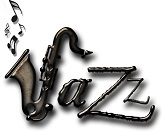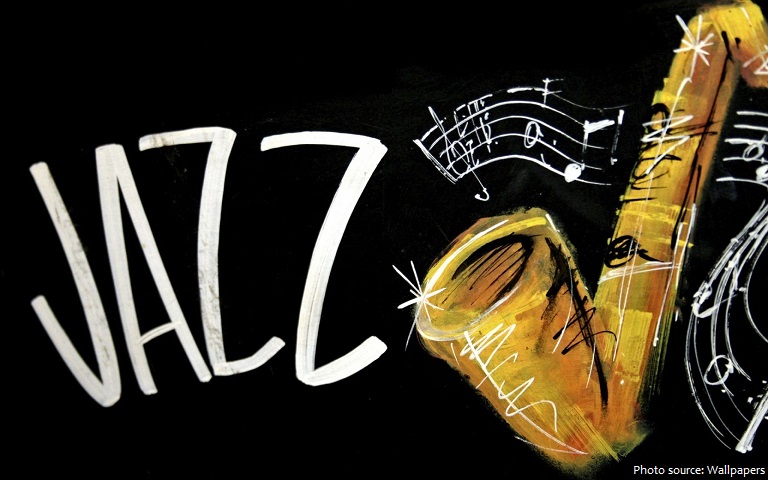
Jazz is a style of music which began in the late 19th and early 20th centuries, primarily with the African-American community, which features improvisation and rhythmic invention at its heart.
It was developed partially from ragtime and blues and is often characterized by syncopated rhythms, polyphonic ensemble playing, varying degrees of improvisation, often deliberate deviations of pitch, and the use of original timbres.
Jazz, in fact, is not — and never has been — an entirely composed, predetermined music, nor is it an entirely extemporized one. For almost all of its history it has employed both creative approaches in varying degrees and endless permutations. And yet, despite these diverse terminological confusions, jazz seems to be instantly recognized and distinguished as something separate from all other forms of musical expression.
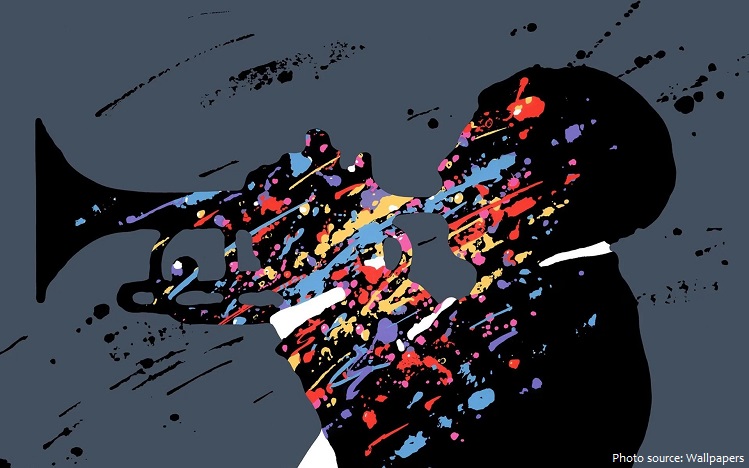
There is tremendous variety in jazz, but most jazz is very rhythmic, has a forward momentum called “swing,” and uses “bent” or “blue” notes. You can often hear “call-and-response” patterns in jazz, in which one instrument, voice, or part of the band answers another. (You can hear Ella Fitzgerald and Roy Eldridge do “call and response” in Ella’s Singing Class.) Jazz can express many different emotions, from pain to sheer joy. In jazz, you may hear the sounds of freedom-for the music has been a powerful voice for people suffering unfair treatment because of the color of the skin, or because they lived in a country run by a cruel dictator.
New Orleans jazz began in the early 1910s, combining earlier brass-band marches, French quadrilles, biguine, ragtime and blues with collective polyphonic improvisation. But jazz didn’t begin as a single musical tradition in New Orleans or elsewhere.
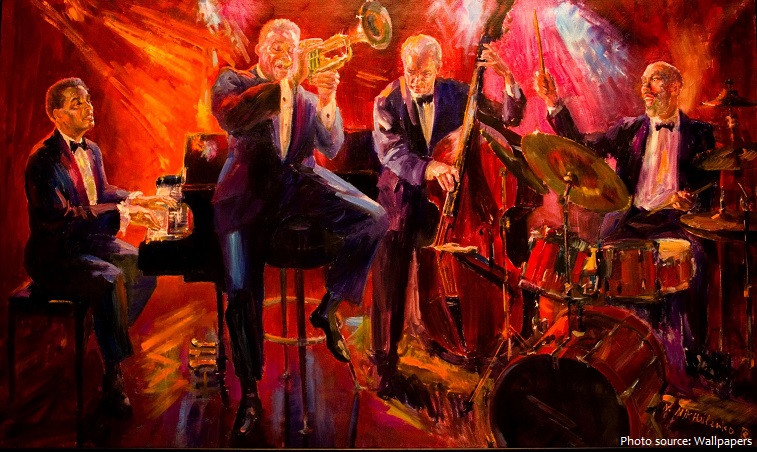
From 1920 to 1933, Prohibition in the United States banned the sale of alcoholic drinks, resulting in illicit speakeasies which became lively venues of the “Jazz Age”, hosting popular music, dance songs, novelty songs, and show tunes. During the Jazz Age, illegal clubs called “speakeasies” were opened all over the United States. These clubs featured jazz music, dancing, and sold alcohol.
Jazz continued to change and evolve over time. Many new forms of music came from jazz. In the 1930s, swing music was popular.
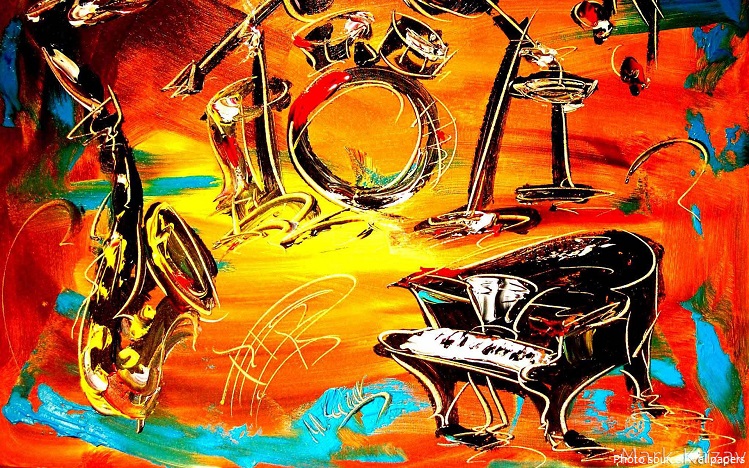
In the early 1940s, bebop-style performers began to shift jazz from danceable popular music toward a more challenging “musician’s music”. The most influential bebop musicians included saxophonist Charlie Parker, pianists Bud Powell and Thelonious Monk, trumpeters Dizzy Gillespie and Clifford Brown, and drummer Max Roach. Divorcing itself from dance music, bebop established itself more as an art form, thus lessening its potential popular and commercial appeal.
Post-bebop slowed down the tempo and added harmonic sophistication. Musicians like Thelonious Monk, Charles Mingus, and Miles Davis cut their teeth in bebop but became better known for their post-bop compositions. Davis developed a genre called cool jazz, which emphasized slower tempos, more minimal textures, and modal playing. Virtuoso saxophonists John Coltrane and Sonny Rollins were equally skilled in bebop, cool jazz, and even post-tonal improvisations like Coltrane’s Ascension album. Meanwhile, musicians like Herbie Hancock and Joe Zawinul merged jazz with funk and rock to create a new genre known as fusion. Others, like Pat Metheny and Bill Frisell, found inspiration in folk music and added that genre to their jazz performances.
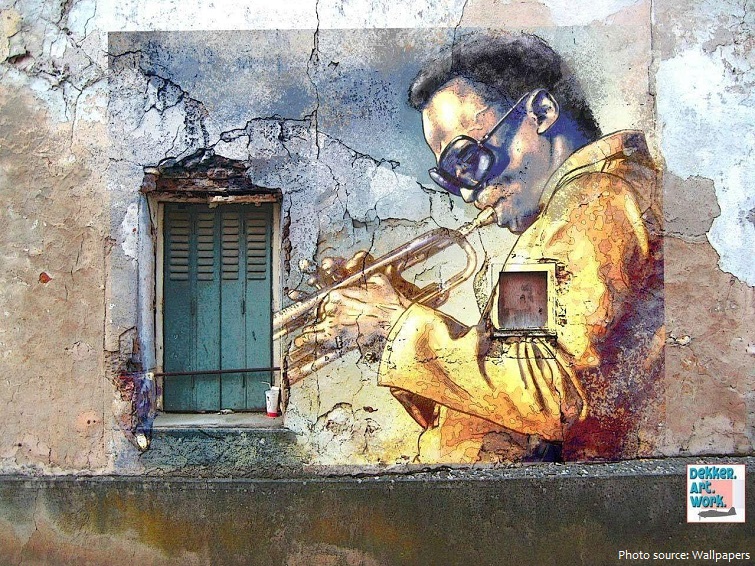
Jazz-rock fusion appeared in the late 1960s and early 1970s, combining jazz improvisation with rock music’s rhythms, electric instruments, and highly amplified stage sound. In the early 1980s, a commercial form of jazz fusion called smooth jazz became successful, garnering significant radio airplay. Other styles and genres abound in the 2000s, such as Latin and Afro-Cuban jazz.
On February 26, 1917, what is generally acknowledged as the first recording of jazz was released. “Livery Stable Blues,” performed by the Original Dixieland Jass Band was a best-selling record for Victor, but is a
problematic “first” as it is a recording of a white band performing an African American genre. There was a copyright lawsuit concerning authorship of the piece. But worse, far from crediting the New Orleans African American musicians they learned from, these young musicians claimed to have “invented” jazz. But it was published at an interesting moment in United States history, as emerging African American genres of blues and jazz were bursting into American consciousness and spreading across the country and then across the world.
The origin of the word “jazz” has resulted in considerable research, and its history is well documented. It is believed to be related to jasm, a slang term dating back to 1860 meaning “pep, energy”. The earliest written record of the word is in a 1912 article in the Los Angeles Times in which a minor league baseball pitcher described a pitch which he called a “jazz ball” “because it wobbles and you simply can’t do anything with it”.
